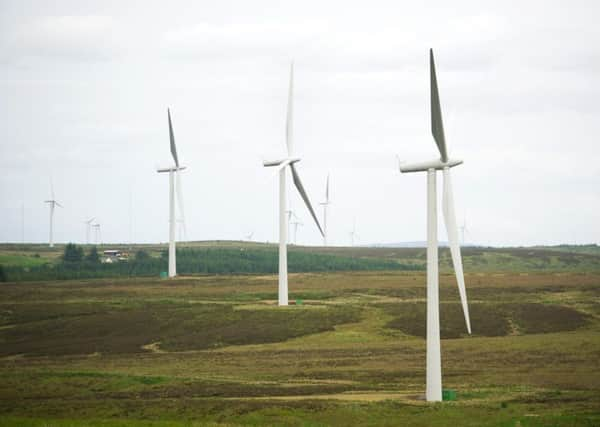Letters: All wind and solar and not enough gas, nuclear and coal will mean energy crisis


He then states: “It’s now cheaper, easier and faster to build onshore wind.” So as wind farms become cheaper to build, the plea for subsidies continues. No wonder, as wind farms owners are paid whether their output is used or not.
What a wonderful position to be in. No wonder the providers want more subsidies to build more wind farms to provide energy to more homes.
Advertisement
Hide AdAdvertisement
Hide AdThere is just a small problem that he forgot to mention. What happens when the wind refuses to blow? In my letter of 20 September I pointed out that per the GB National Grid status 17/9, wind produced 4.81 per cent of demand and the day after this it had fallen to 1.72 per cent. This morning the National Grid meter shows a contribution of wind at 3.53 per cent of total GB demand.
The wind turbine behind our house is having a complete rest. As previously stated, the GB installed capacity is over 16GW, just now wind provides 1.31GW or 8 per cent of installed capacity. I wonder how many thousands of houses are benefitting from wind energy just now?
Instead of building more wind capacity, perhaps Scottish Power (and the government) should think about maintaining enough dispatchable energy so that we do not end up with a repeat of the three-day week, but for entirely different reasons. Too much wind and solar installed and not enough gas, nuclear and coal will lead to inevitable gaps when the wind and sun refuse to co-operate and the thermometer drops, adding to the shortage of energy.
Dr A McCormick in his letter of 25 September clearly demonstrated that battery and hydro storage are not viable solutions to the potential energy gap problem.
John Peter
Monks Road, Airdrie
I attended a conference in Glasgow on 22 September on infrasound in relation to wind turbines and the effect on people’s health.
A concerned group of acousticians have formed an independent noise working group because of concerns that a proportion of people living in proximity of turbines report similar symptoms of ill-health all over the world.
It is surprising that the industry and government dismiss this problem, considering that in the history of the world people have never lived next to anything like these structures.
The message to sufferers is that it is a psychological problem.
Advertisement
Hide AdAdvertisement
Hide AdThe presentations by two well-qualified acousticians, one from France and one from the United Kingdom, and from a Portuguese professor into health effects convinced me there is a problem.
Infrasound is not measured in the environmental statements used to assess wind farms. “A”-weighted decibels are used, which were devised in the 1930s for telephones and only measure the audible range.
The wind farms conform to current regulations, but these result in assessing the measurement of sound excluding the vital low frequencies.
Not all people complain, but then everyone responds differently.
The professor proved to me from her investigations that infrasound can produce physiological harm. Her funding has been stopped.
The industry will not be worried about compensation claims because they will say they followed regulations.
It will be the public who would have to pick up the tab because of ignorance in government of scientific matters.
Urgent research and resources are needed to pursue this work.
It is inhumane to have sufferers being bounced between the National Health Service and environmental health with no one taking responsibility.
Celia Hobbs
Peebles Road, Penicuik